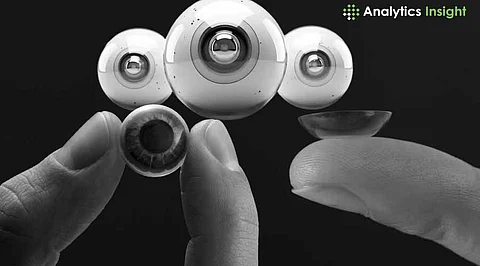

The future of wearable technology is no longer confined to smartwatches and fitness trackers. Enter smart contact lenses—an innovation poised to redefine the way we interact with digital information and the world around us. Combining cutting-edge augmented reality (AR) capabilities with seamless integration into daily life, smart contact lenses represent a leap forward in both vision enhancement and AR applications.
Smart contact lenses are advanced devices that look like ordinary contact lenses but come equipped with microelectronics, sensors, and AR displays. These lenses can overlay digital information directly onto the wearer’s field of view, eliminating the need for external devices like smartphones or AR glasses.
By embedding tiny microchips, sensors, and miniature displays within the lenses, developers aim to provide real-time information and enhanced visual capabilities. From displaying navigation directions to monitoring health metrics, smart contact lenses are designed to function as a digital extension of the human eye.
Augmented reality has already made significant strides in industries such as gaming, healthcare, and retail, largely through devices like AR headsets and smartphones. However, these devices come with limitations such as bulkiness, restricted field of view, or reliance on handheld technology. Smart contact lenses address these challenges by offering an unobtrusive, hands-free AR experience.
Imagine walking down a busy street with smart lenses guiding you to your destination through virtual arrows seamlessly displayed in your vision. Or attending a meeting where real-time translations appear as subtitles in your field of view. The possibilities for enhancing daily life and professional tasks are immense.
AR Overlays: Smart lenses can project digital overlays, including text, images, or video, directly into the user’s line of sight. This allows for real-time access to information without breaking focus.
Health Monitoring: Many prototypes include sensors to track vital health metrics such as glucose levels, eye pressure, and even hydration. This capability is particularly valuable for managing chronic conditions like diabetes or glaucoma.
Vision Enhancement: For individuals with vision impairments, smart contact lenses can offer features like adjustable focus, low-light enhancement, and even color contrast optimization.
Connectivity: Equipped with wireless communication capabilities, smart lenses can sync with smartphones, smartwatches, or other devices to provide seamless access to apps and data.
While the potential of smart contact lenses is undeniable, their development is not without hurdles. The foremost challenge lies in miniaturizing complex electronics to fit within a soft, flexible, and biocompatible material.
Another significant concern is power. Current prototypes rely on micro-batteries or wireless charging methods, but ensuring long battery life while maintaining comfort and functionality is complex. Additionally, issues related to data security, user privacy, and regulatory approval also need to be addressed before these lenses can reach mass adoption.
The versatility of smart contact lenses opens up opportunities across multiple sectors:
Healthcare: Beyond health monitoring, these lenses can assist surgeons by providing real-time overlays of patient data during operations.
Education: Smart lenses can revolutionize learning by enabling immersive AR experiences, such as interactive lessons or virtual field trips.
Gaming and Entertainment: Gamers could enjoy fully immersive AR experiences, merging the digital and physical worlds seamlessly.
Workplace Productivity: Workers in fields such as construction, logistics, and manufacturing could benefit from hands-free access to instructions, schematics, or live data.
Companies such as Mojo Vision, Google, and Sony are leading the charge in smart contact lens development, investing heavily in research and prototypes. With rapid advancements in nanotechnology, material science, and AR software, experts predict that consumer-ready smart lenses could hit the market within the next decade.
Despite technical and ethical challenges, the promise of smart contact lenses is enticing. Merging vision correction with augmented reality can easily become the next step for human-computer interaction. The time spent scanning information screens will be replaced by looking at the world around us through a lens of augmented reality.
